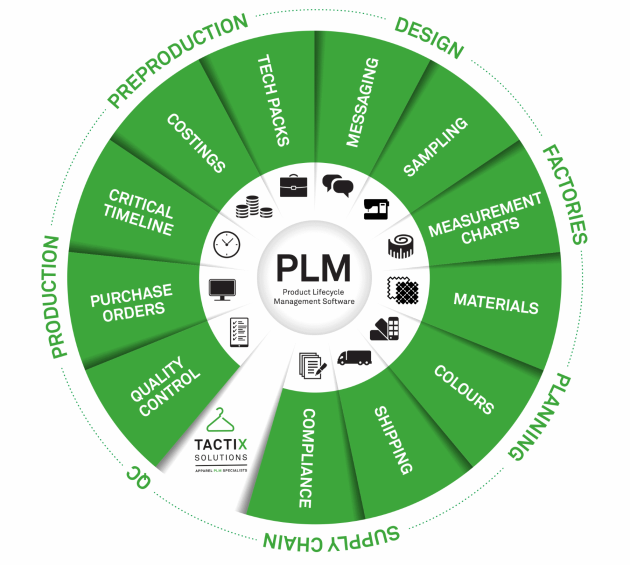Apparel PLM specialist Tamir Doron tackles a key industry issue.
Do you know what PLM means?
It seems that in Australia, not many do.
But the ones that know about it are the ones reaping the benefits.
Companies like Pacific Brands, Country Road and Bardot are only some of the innovative companies that are on the front foot when it comes to streamlined operations around product development, production and global supply chain.
PLM stands for Product Lifecycle Management.
It is the process of product development, from concept to finished product. All apparel companies (and in fact all product manufacturing companies) perform this process day to day in one way or another.
“The most exciting feature of the PLM system is that it holds all product information in one place.”
When you run a small apparel brand, product development is managed by a small team of people that handle all responsibilities, from planning to design and pre-production, to production, QA and deliveries.
Large scale operations however, involve multiple teams, both local and global, that could be dealing with hundreds of products at any given time.
A closer look will reveal a plethora of issues with such operations.
Aside from products missing the in store due date, the level of errors, inefficiency and time wasted is incredibly high. PLM is divided into 2 parts.
The process & the tool.
The process is what you actually do and is likely to have been built from day one when you started as a small team. Your company then begins to grow, sales are increasing and you are busy fulfilling orders and keeping customers satisfied.
You won’t always have time to think about how you can improve and it is inevitable that developing your production process will be ‘set aside’ while you concentrate on more urgent matters in your business.
The tool itself is an IT software solution that enables different teams to collaborate in real time, eliminate duplicate data entry, embrace a single version of the truth, increase process efficiency, enable a closely managed and integrated critical path that can produce management reports and a lot more.
The most exciting feature of the PLM system is that it holds all product information in one place for everyone in the company to easily access which is something that is virtually impossible without a PLM system.
The PLM tool is the answer to the familiar decentralised model of spreadsheets, emails, and multiple document versions stored on the file server, employee emails etc.
In a decentralised model you cannot make any decisions (not to mention real time decisions) about the progress of your product ranges. Access to information and proper decision making are critical in the current Australian retail landscape where manufacturing prices are rising and margins are shrinking.
“Eliminate duplicate data entry, embrace a single version of the truth.”
If you look closely at your company’s process, you may find that you are wasting a lot of time in multiple data entry, you have no report based visibility into your product development / sampling and everyone in your company spends all day looking for and finding all sorts of versions of what is meant to be the correct product information.
They then put it into their own reports, spreadsheets and save it to the shared drive.
This is what happens in most apparel companies in Australia.
For companies that handle a large volume of products including manufacturing overseas, a PLM tool is the only solution to growing your business effectively while having end to end control over your product development process.
The benefits in correctly implementing and utilising a PLM tool are remarkable and can sometimes be hard to imagine when you are viewing it from the manual world you may be in right now.
Tamir Doron is an apparel PLM specialist at Tactix Solutions.



